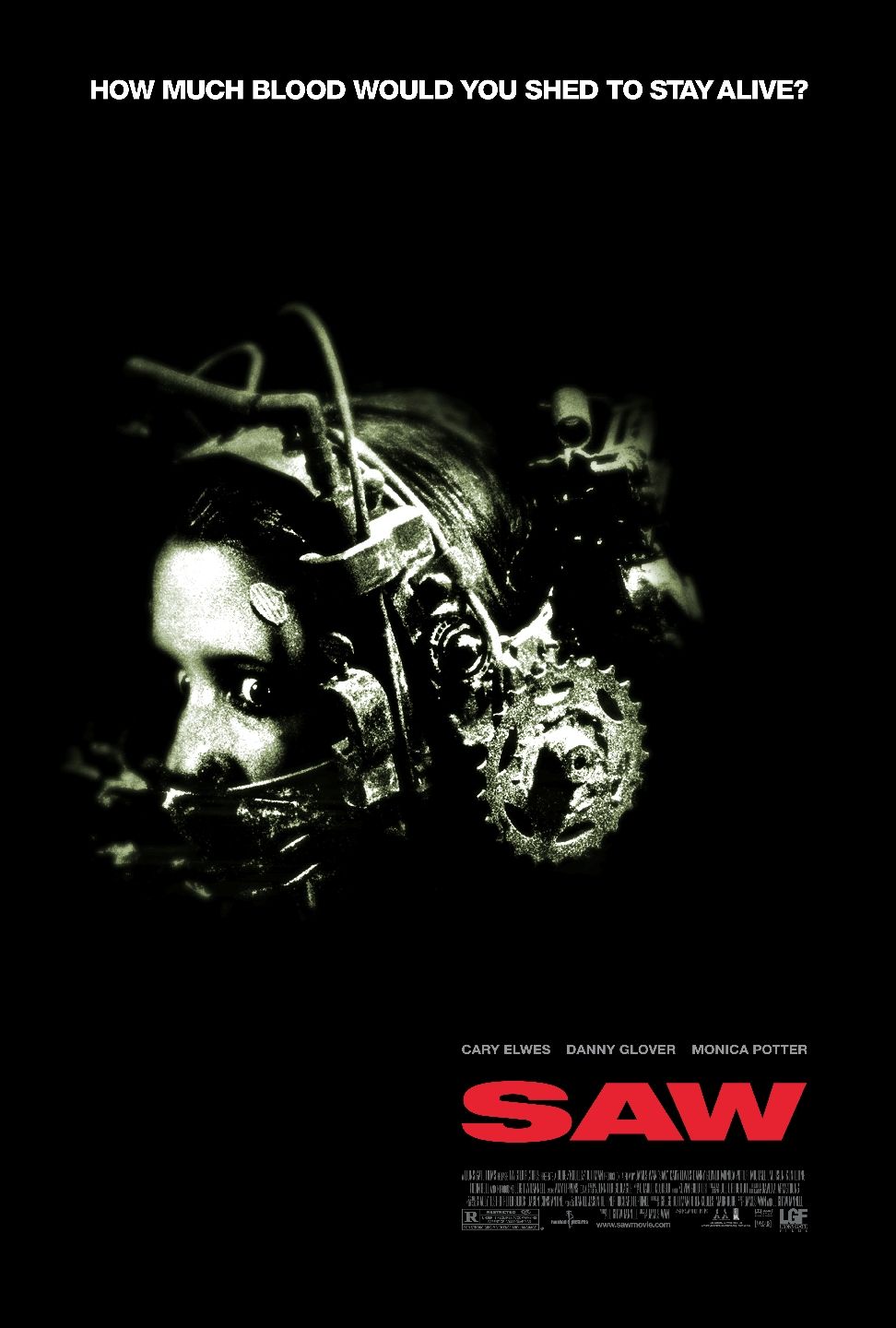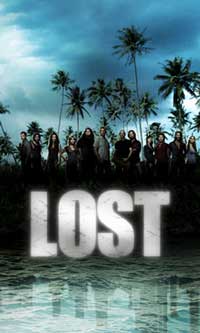(Before I begin, I'm want to make this very clear: All of the Saw films that I reference to or display in this article may contain brutal, graphic, and sometimes disgusting imagery. For those with a faint of heart, or for those who just don't feel like reading about this during a meal, I would tread lightly while reading this.)
Alright, well here it is. The moment of truth. The answer we've all been waiting for. The personal testament to the ordeal that only a few have dared ventured to. Don't get me wrong, I know could've done something else. I could've done a Formal Film Study on Quentin Tarantino, Dreamworks, or movies with talking animals. But I chose this. So here it is.
The first Formal Film Study of all seven Saw movies.
Now, obviously I'm going to go through this study a little bit differently. While most film studies in this class focus on several different movies with connecting themes, I'm stuck with seven movies that are essentially the same that have to be connected. Why do they have to be connected? Well, I'll get that later, trust me. There's a lot to talk about in these movies, and I'll make sure to save my personal opinion for the finale.
But to start things off, let's take a brief history lesson of the successful horror franchise of all time.
HISTORY:
The original idea behind Saw is credited to two Australian film school graduates, James Wan and Leigh Whannell. After tossing around ideas, and drawing inspiration from The Blair Witch Project and Darren Aronofsky's Pi, the two decided to try to get their idea into form. After failing to get proper funding from various studios in Sydney, and realizing that their initial budget of $30,000 would not be enough, they were convinced by their agent to go to Los Angeles to find a studio.
In order to get the studios' attention to the project, Whannell provided $5,000 to make a seven-minute short film based on one of the traps from the original script. With Whannell playing the main role, and Wan shooting with a 16mm camera, it took the duo two days, with some assistance, to make the short.
With the script and short bundled and out, they soon got the attention from studios and producers. I didn't take long for Gregg Hoffman, producer and co-founder of the then-new Twisted Pictures, to take specific interest. The movie was signed, and, after a couple of mortgages from the independent producers, had a now reasonable budget of $1 million.
The original Saw short is below. (Even though the amount of blood/gore is very much absent compared to the later movies the film's content is still horrific. Viewer discretion is advised.)
Now, enough of the history (you can find the rest of that on Wikipedia). It's time to cut deep into the Saw films.
WRITING AND PLOT:
Now, I know that you may not trust me on this. You might be thinking, "Writing? Plot?! C'mon, Grant. Saw is just torture porn." And I wouldn't blame you just by looking at the posters.
 |
| Blood, Gore, and Torture |
 |
| Blood, Gore, and Torture 2 |
 |
| Blood, Gore, and Torture IN 3D!!!! |
But hear me out when I say that there is more to this franchise than you could ever imagine. No, really, I'm being dead serious here. This is the most plot-centered and and most twist-heavy (as in Shymalan plot twist) horror film series there is.
Don't believe me? Well, kudos to you for thinking with a logical brain. But in honesty, I'm not lying.
There's a great article online called "The Shocking Complexity of the Saw Movies" and it lists a few reasons as to why these films are so tightly plotted. (Some spoilers warning)
Good lord! What is this? This is just as complicated and confusing as Lost...which is probably why they did this. The article later states that Hollywood learned a lesson from that television series in regards that "audiences could be enthralled, not repelled, by huge mysteries that unfolded over years...The Saw producers took this lesson to heart, and built the Saw sequels to be full of twists, complete with Lost-esque flashbacks and lots of loose ends."
- In Saw III, we see a character read a letter and burst into tears, shortly before flying into a homicidal rage. We don’t learn who wrote this letter until Saw IV. We don’t learn what it said until Saw VI.
- Saw III shows us the five minutes immediately after the end of Saw II. Saw IV shows us what happens immediately after THAT.
- Saw IV actually takes place during the events of Saw III, which is only revealed when a character from Saw IV literally walks into the final scene of Saw III, about two seconds after the previous film cut to black.
- Saw V picks up about thirty seconds after Saw III.
- You see the traps from Saw I being set up in flashback sequences during Saws III and V. You see the traps from Saw II being set up in flashback sequences during Saws III and V. You see the traps from Saw III being set up in flashback sequences during Saws V and VI. And I’m not talking about merely reusing footage – I’m saying that the latter movies recreated earlier sets and brought back actors who were chronologically deceased, to show us new information about things we’d already seen.
- After the credits of Saw VI, you see something that took place between the events of Saws II and III.
- The main villain, Jigsaw, dies at the end of Saw III, and yet the events of all the subsequent movies are planned by him. And no, there’s nothing supernatural about it.
Good lord! What is this? This is just as complicated and confusing as Lost...which is probably why they did this. The article later states that Hollywood learned a lesson from that television series in regards that "audiences could be enthralled, not repelled, by huge mysteries that unfolded over years...The Saw producers took this lesson to heart, and built the Saw sequels to be full of twists, complete with Lost-esque flashbacks and lots of loose ends."
 |
| Hello Jack. I want to play a game. |
Well, that's all fine and dandy, but does that really entail good screenwriting? Well, yes and no. At it's core, it's still a shock slasher series, and there's not much complication in a script to say "scream loudly". But aside from that, there was an aspect of the plot, asides from it's twists and turns, that stood out for me: Jigsaw, the main villain.
Jigsaw, aka John Kramer, aka the guy you don't break the rules with, has a very specific method to his madness. The source of his reign of terror doesn't stem from maniacal rage or vengeance on society, but rather a bunch of experiments. He's an engineer by training, and you can see it in his traps, but everything he designs has a purpose for every specific subject, and, more importantly, they each have a way out that requires them to sacrifice something from themselves, be it bloodshed or ridiculous amounts of bloodshed. "How much blood will you shed to stay alive," Jigsaw would say to his game-players. He's not downright killing innocent people. He takes people who takes their life for granted and plants them in these "games". If they win, they live, and ultimately end up with a feeling of grateful appreciation towards their lives (some judge whether this is true or not in the films). If they lose, they die (quite spectacularly at times). It's all about testing the capabilities of the human survival instinct.
Now with all that in mind, I still want to make it clear that this isn't a franchise that you'd casually watch with your girlfriend/boyfriend every Friday night. It still brutal as it's said to be, with all of the traps and such. Which brings me to my next point:
THE TRAPS
I'm not going to spend a whole bunch of time on this. Frankly, I'd rather discourage some people from even knowing about what some of these traps do. But I have to mention it. It's the Saw series! This is what half of the movies are.
What I'll say about the traps is this: I'm very impressed by the studios production of them. For each trap, they put in a ridiculous amount of time and effort into all of them and made sure they were safe for the actors and that they looked convincing enough on-screen. Below are examples of the creation and production of several traps. (Warning: Some language involved, plus the imagery might be horrific for the faint of heart. Viewer discretion is advised.)
CLOSING THOUGHTS
In my opinion, I think the Saw franchise does deserve all of its cultural glory that it has received. Sure, it can be gruesome, but that's what it's supposed to be. And after watching them all by myself, I realize that the real fun in these movies come from watching it with a crowd or maybe even a few friends, just to share that collective feeling of "EW! Gross! Did you see that?!" I would not recommend theses films to be watched by everyone, but I'm stopping everyone either. I just wanted to show to you all that if you took out all of the blood, gore, and torture you'd be left with a pretty neat and thrilling series (even though it would only be about 60 minutes).
So, the Saw films aren't horror masterpieces, that's for sure, but they have enough depth to them that the audience can relate to and for the fans of the series to talk about on the message boards until the next installment is released. (Which it will. I ain't buying that whole "Final Chapter" nonsense from Saw 3D. No sir! I'll be going to the midnight premires of Saw 8-12, and there's not a damn thing you can do about it!)
Fond regards,
~Grant Dunderman
October 2013
Film Studies Period 10
P.S. For those of you who felt a little shaken after watching the clips above, have some puppies. You deserve them.


Real nice job with this Grant. Really interesting. Honestly, I haven't seen any of the Saw series, because, as you suggested, it just looked like gory torture scenes to gross you out. But, I like the complexity that you describe. And, as you suggest, it's not exactly "100 Years of Solitude," but that is interesting to know that some thought was put into how each story connects with the other, interesting manipulation of time, riddles solved by other films in the series, etc. I'm not quite sure if I'm ready to tackle it personally, but I hope you had a good time with all of this. Sure sounds like you put in a lot of work. Excellent job.
ReplyDelete